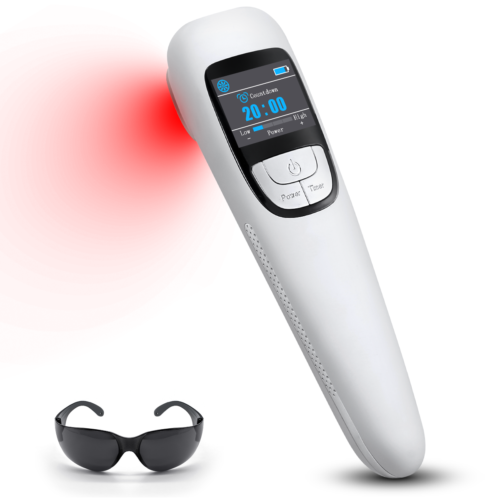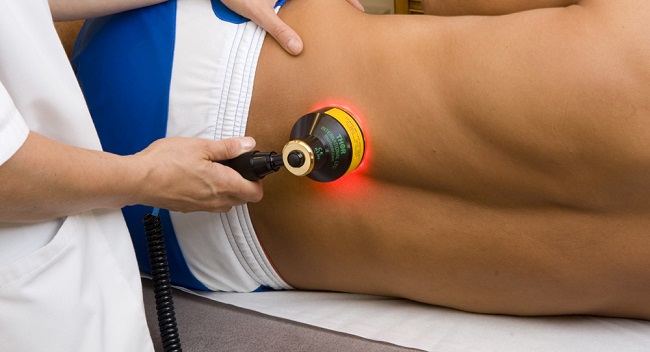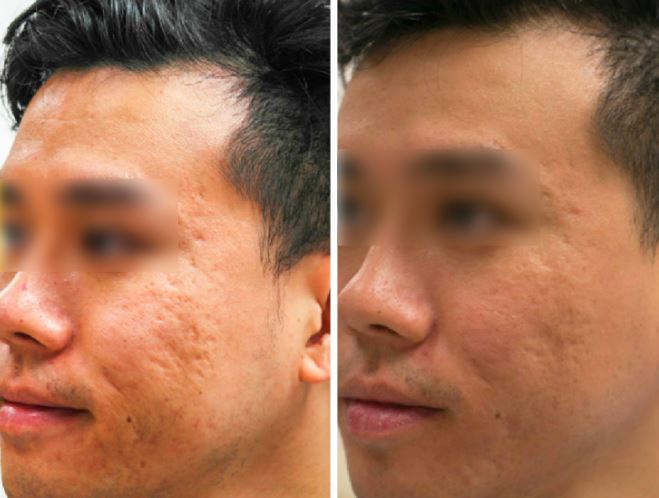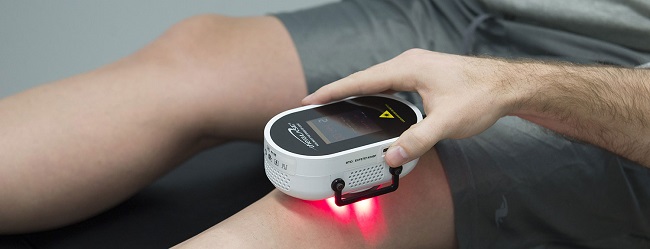Address
430 E 29th St, New York, NY 10016, United States
Need help or have a question?
Contact us at: hello@doctormier.com
Address
430 E 29th St, New York, NY 10016, United States
Need help or have a question?
Contact us at: hello@doctormier.com

The popularity of cold laser therapy is growing every year, as it is applied to various conditions and it is an alternative to surgery and antibiotics with a lot of side effects.
While there is some controversy surrounding this therapy, there is already a lot of scientific research supporting its effectiveness. In this article, we will discuss the benefits and risks of cold laser therapy, as well as the different types of devices available on the market today.

Most effective for pain relief
✓ Most effective pain reliever due to FDA
approval, which means it has been tested and proven to perform and be safe;
✓ The device is very portable and comes with a carry case so you don’t have to worry about being comfortable on the go.

Best device for arthritis treatment
✓ Most effective treatment for arthritis is due to the device’s ability to penetrate deep into tissues, reducing pain and stiffness;
✓ Has variable treatment time, which helps to customize the device according to your needs.

Most effective for use on pets
✓ Most effective for use on pets due to proven red and infrared light combination technology to help relieve pain and reduce inflammation;
✓ The device is suitable for different parts of the body, however, when used on the back, additional assistance may be needed.

Most convenient to use
✓ Most convenient to use due to the display of the remaining treatment time, but at the same time very effective;
✓ Has a good battery life, so the user can do three or four treatments on a single charge.
Cold laser therapy is a type of treatment that uses low levels of visible or near-infrared light to treat a variety of conditions from age-related changes to chronic pain.
Cold lasers work by stimulating the mitochondria, which are the powerhouses of cells. This increases energy production, which in turn leads to the enlargement of cell proliferation and tissue regeneration.

One of the main advantages of using cold laser therapy is that it is a completely non-invasive procedure. No needles or drugs are used here, and there is no risk of side effects. The therapy is also very gentle and can be easily tolerated by most people.
The treatment time is usually short, about 10-20 minutes, and since only light is used, the treatment is not painful at all, there are no side effects, and often brings relief in the first session, and the main problems are effectively eliminated in 3-6 sessions.
Cold laser therapy can be used to effectively treat many types of conditions because it works at the cellular level. It can treat the next diseases, but is not limited to them:
Arthritis is a common disease that involves inflammation of the joints. Cold laser therapy has been shown to be effective in reducing pain and stiffness by stimulating circulation [2].
Tendinitis is an inflammation of the tendon, which usually appears after prolonged physical exertion associated with professional activities or sports. Cold laser therapy can also help reduce pain and inflammation in people with this condition [1].
Chronic pain is a general term used to describe any type of long-term pain that lasts more than 3 months. Cold laser therapy has been shown to be effective in reducing this type of pain. It can also help increase the range of motion and flexibility [3].
Cold laser therapy has been shown to be effective in healing wounds and burns. This can help speed up the process and reduce scarring [4].
Neuropathy is a condition in which nerve damage occurs. Cold laser therapy stimulates microcirculation around the nerve fibers, which increases blood flow and thereby reduces pain [5].

Most effective for pain relief
The TENDLITE Cold Laser Therapy Device is the only -approved treatment for chronic pain, inflammation, and stiffness on this list.
A feature of the device is the ease of use, it has only one button; pressing it starts a 1-minute timer, after which you direct the light to the painful area. Since the treatment time is quite short, you may need several sessions. If you don't want to bother with restarting the timer, check out ATANG cold laser therapy device and SINORIKO cold laser therapy device which have up to 30 minutes duration.
Also, the device is very portable and comes with a carry case, unlike the KTS cold laser therapy device, so you don't have to worry about being comfortable on the go.

Best device for arthritis treatment
ATANG cold laser therapy is a device that can help reduce pain, inflammation, stiffness, and promote tissue healing. It uses a combination of red (650 nm) and infrared (808 nm) light to promote the body's natural healing processes at the cellular level.
The device can be used to treat a wide range of conditions such as back and neck pain, cramps, and more. It is also an effective treatment for chronic wounds and postoperative pain. However, users note that the most noticeable result was in the treatment of arthritis, which allowed for reduced pain and stiffness in the body already in 3 sessions of use.
In addition, the ATANG cold laser therapy is easy to use and includes a choice of processing time, which helps to customize the device to your needs, unlike the TENDLITE cold laser therapy device which only has a 1-minute timer.
It also comes with protective goggles so you don't have to worry about safety.

Most effective for use on pets
SINORIKO cold laser therapy device is one of the most effective ways to relieve pain. Like ATANG cold laser therapy, it has a combination of 650 nm and 808 nm wavelengths that penetrate deep into tissues and have proven to be the most effective in relieving pain and reducing inflammation.
The device is suitable for different parts of the body and is also approved for use on animals. However, if you wish to use it on your pets, check with your veterinarian that this therapy is appropriate for them.
SINORIKO cold laser therapy is easy to operate due to the large LCD screen, it is portable, and the bag included in the set helps out when travelling.

Most convenient to use
The KTS cold laser therapy device is very effective in relieving pain, inflammation, and swelling. It also helps with the healing of wounds, and bruises.
The device has a good battery life, so the user can do three or four treatments on a single charge. Also, it has different time settings that you can choose according to your needs, like the ATANG cold laser therapy device.
In addition, the display shows the remaining time, which is very convenient when used. Buyers noted that this feature in a number of cases was the key when choosing a device.
This device is suitable for both humans and pets. Glasses are included, but if you want to travel with this device, you will need to purchase a bag as it is not included, unlike SINORIKO cold laser therapy device.
There are a number of different ways in which cold laser therapy can be used to treat various conditions and injuries, and scientists are still working to understand all of the potential benefits that this therapy may offer. Below are some of the ways in which cold laser is being used currently or is being studied for potential future use.
LLLT has been used for many years to treat pain and promote healing. Many studies have demonstrated the analgesic and anti-inflammatory effects of photobiomodulation.
One study [6] evaluated the effectiveness of a cold laser for the treatment of low back pain. 40 patients were randomly divided into two groups: a case group (true laser with 808 nm) and a control group (sham laser). There were 12 sessions in total. As a result, spinal tenderness resolved in 89.47% of patients in the true laser group at the end of one month.

The purpose of the next study was to investigate the effect of low-intensity laser therapy on acute pain after surgery. Since postoperative pain is a common complication that can lead to serious illness and slow recovery.
In this study [7], 54 patients who were candidates for surgery for tibial fractures were randomly divided into two groups, namely control and laser therapy. Both groups had the same type of surgery and anaesthesia technique. After surgery, patients in the laser group were treated with a combination of two lasers (808 nm and 650 nm), while the control group received the laser in off mode for the same duration as the first group.
The result showed that the pain intensity was less in the laser therapy group compared to the control. In addition, the amount of pain medication consumed in the laser group was significantly less than in the second one.
In dermatology, cold laser has a beneficial effect on wrinkles, acne, hypertrophic scars, and burn healing.
Acne vulgaris is a very common skin disease and remains a major problem in practice. In this study [8], two different LLLT wavelengths (630 and 890 nm) were evaluated in the treatment of acne vulgaris. 28 patients with mild to moderate acne were included. They were treated with red (630 nm) and infrared LLLT (890 nm) on the right and left sides of the face, respectively, twice a week for 12 sessions.
Ten weeks post-treatment, acne lesions were significantly reduced on the 630 nm LLLT-treated side, in contrast to the 890 nm. In conclusion, the red wavelength is safe and effective to be used to treat acne vulgaris compared to the infrared.

For the following study [9], 24 people with mild to severe acne vulgaris on the face were recruited. They were treated for eight sessions, twice a week with an interval of 3 days, alternating blue light with a wavelength of 415 nm and red light with a wavelength of 633 nm. Patients also received light microdermabrasion before each session.
As a result, at a 4-week follow-up, the average reduction in the number of lesions was 46%. With a 12-week follow-up, this estimate almost doubled (by 81%). Severe acne showed a slightly better response than mild one. Side effects were minimal and transient.
The combination of blue and red LED therapy has excellent potential in treating mild to severe acne.
Low-intensity laser therapy using near-infrared light can penetrate deeper into damaged tissue and provide healing for scars. In the study [10], 19 patients with burn scars were treated with a 670 nm laser twice a week for 8 weeks. As result, 17 out of 19 patients showed significant improvement after treatment.
There are a number of potential benefits of cold laser therapy, including [11]:
One of the most common uses of cold laser therapy is for pain relief. Low-level lasers have been shown to help reduce inflammation and promote healing, which can in turn help to reduce pain levels.
Inflammation is a natural response of the body to injury or disease, but it can sometimes become chronic and lead to further health problems. Cold laser therapy can help to reduce inflammation by stimulating blood flow to the area.
Cold laser therapy has also been shown to promote wound healing. Low-level lasers can help to stimulate the production of collagen and new blood vessels, which can speed up the healing process.
Cold laser therapy can also help to increase the range of motion and reduce stiffness in joints and muscles. It can also be used to help conditions such as carpal tunnel syndrome, tendonitis, and bursitis.
Cold laser therapy can help you recover from injuries and surgery faster. It is because of its ability to reduce inflammation and pain as well as speed up the body’s natural healing process.

Although laser therapy has relatively few contraindications compared to other therapeutic methods (injections, antibiotics), there are some caveats worth noting.
Cold laser therapy should not be used on patients with the following conditions [12]:
❌ Cancer
Cancer patients should not undergo cold laser therapy, as the treatment, may stimulate the growth of cancerous cells and lead to the spread of the condition.
❌ Bleeding disorders
Patients with bleeding disorders or who are taking blood-thinning medication should not receive cold laser therapy, as it may cause excessive hemorrhage and bruise after treatment.
❌ Pregnancy
Pregnant women should refuse cold laser therapy, as the treatment may be harmful to the developing fetus and cause permanent damage.
❌ Epilepsy
Patients with epilepsy may trigger a seizure if will using cold laser therapy. Also, if you have any other health condition that affects your nervous system, tell your doctor before using cold laser therapy.
❌ Photosensitivity
Patients who are photosensitive should not receive cold laser therapy, as the treatment may cause an allergic reaction and worsen their condition.
❌ Cardiac pacemaker
Patients with implanted cardiac pacemakers should not undergo cold laser therapy due to the potential adverse effects of the laser energy on the pacemaker. There is a risk that the laser energy could disrupt the normal functioning of the pacemaker, which could lead to serious consequences for the patient.
Cold laser therapy is an effective treatment option for pain relief. It is a safe alternative to traditional pain relief methods such as surgery or medication.
Previously, this treatment could only be done in a clinic, but with the development of medicine, cold laser therapy devices are available for use at home. So if you have a busy schedule or like to be in control of your treatment, this method is for you. Another feature is that most devices can also be used to treat pets, so your entire family can get relief from pain.
In addition, this treatment is becoming more affordable as technology improves and more manufacturers enter the market. So if you are looking for an effective, safe, and inexpensive pain relief solution, cold laser therapy is a great option.
Cold laser therapy is a treatment that uses low-level lasers from 600 to 1000 nm to stimulate healing.
The science behind how cold laser therapy works is that the energy from the laser helps to increase the production of ATP (adenosine triphosphate), which is the energy that cells need to function. This helps to promote healing by reducing inflammation and increasing cell regeneration.
Cold laser therapy is generally considered to be a safe procedure. The most common side effect is temporary discomfort or tenderness at the area of treatment.
The number of treatments will vary depending on the condition being treated and the response to treatment. In general, most conditions will improve after 3-5 treatments, although some may require more.